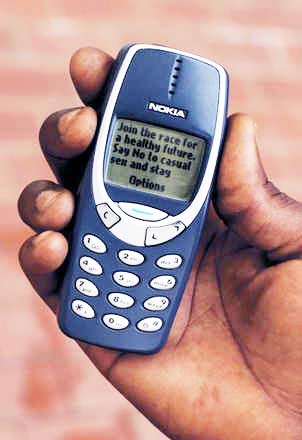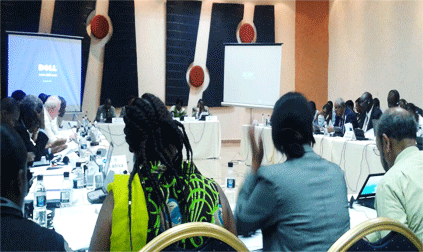By KAITLYN PHILLIPS & ZACK WETTSTEIN
 What can a cell phone do? It makes it possible to call your mom from half way across the world; to check your email while standing in line at the grocery store; and to snap a picture and instantaneously let your cyber following know what you are up to. But did you also know that cell phones can record and share life-saving medical information to and from rural areas in the developing world? Indeed, add this to the list of what a cell phone can do.
What can a cell phone do? It makes it possible to call your mom from half way across the world; to check your email while standing in line at the grocery store; and to snap a picture and instantaneously let your cyber following know what you are up to. But did you also know that cell phones can record and share life-saving medical information to and from rural areas in the developing world? Indeed, add this to the list of what a cell phone can do.
In recent years, the field of mobile health, or mHealth, has exploded. The power of cell phones and other mobile devices is being harnessed to improve health delivery systems worldwide. We wonder if Martin Cooper (credited with inventing the cell phone) could have ever dreamed that it would one day be used to increase access to health services amongst hard to reach populations; that it would lower the costs of basic health services; that it would improve our abilities to diagnose, track, and treat diseases; and that it would increase access to health information among health workers and the general population?1 Who ever could have dreamed that with now over 4.6 billion phones in use worldwide, the opportunity for this technology to help solve global health care problems would be so high?
Where is mHealth now?
Numerous mobile health efforts in the United States have focused on facilitating doctor-patient interaction outside the exam room. New opportunities have opened up to help improve patient education and behavior change by, quite literally, delivering essential information directly into people’s hands. For example, the Text4baby program provides free health-related information to expecting mothers via text messages throughout her pregnancy and first year of the child’s life. But mHealth extends beyond supplementing existing health systems in high-resourced areas. Most recently, mHelath initiatives are being used in settings where health delivery systems are significantly lacking or virtually non-existent.
See Also:
- 12 Initiatives Taking Positive Steps Towards a Healthier, Fairer and More Sustainable Food and Agriculture System
- Cuatro Nicas: A Photo Essay on Life in Post-War Nicaragua
Mobile health solutions in under-resourced areas are hot topics and have been tested by a vast number of pilot projects in recent years. In Malawi, community health workers (CHWs) have been using text messages to improve drug adherence among HIV positive patients. The messages remind patients of their appointments and allow experts to collect information during disease outbreaks. CHWs in Karachi, Pakistan are using cell phones to improve the treatment of childhood pneumonia, the greatest killer of children under five. The cell phones provide an avenue of instant communication between the CHWs and local health centers, allowing for early detection and treatment of sick children in the communities, helping avoid potentially deadly complications.
- A potentially disastrous cholera outbreak was avoided during a religious festival in 2001 in Prayag, India with the help of mobile tools.
- In Malawi, community health workers (CHWs) have been using text messages to improve drug adherence among HIV positive patients. The messages remind patients of their appointments and allow experts to collect information during disease outbreaks.
- CHWs in Karachi, Pakistan are using cell phones to improve the treatment of childhood pneumonia, the greatest killer of children under five.
Finally, a potentially disastrous cholera outbreak was avoided during a religious festival in 2001 in Prayag, India with the help of mobile tools. CHWs present at the event isolated the sick festival participants when they received the results of the lab tests via the mobile telephony system, preventing the disease from spreading. Crises averted.
mHealth in Nicaragua
In Nicaragua, the fruit of mHealth opportunity is ripe for the picking. As the second-poorest country in the Western Hemisphere, Nicaragua is home to some of the highest rates of cervical cancer, chronic kidney disease, and childhood pneumonia in the region. Already efforts have been undertaken to tackle some of these challenges via mobile tools.
For instance, during the most recent H1N1 influenza and dengue fever outbreaks in 2009, PATH, an NGO that seeks to improve access to essential technologies for health, and the Nicaraguan Ministry of Health (MINSA) developed a text message communication system. This system collected up-to-the-minute information from hospitals and clinics around Managua. In turn, this limited wait times and improved delivery of care during the epidemics.
Most recently, PATH and CARE International have begun working with MINSA to improve communication of medical emergencies in rural areas surrounding Matagalpa. This region has the highest rates of maternal and child mortality in Nicaragua. Imagine, if you will, a once expectant mother is now dangerously close to losing the life of her unborn child. She is isolated in a rural village and there is insufficient access to the necessary health care. PATH and CARE are working to establish communication through cell phones for emergencies exactly like this one. Instead of traveling three hours into town to receive help, a CHW can use a cell phone to call an ambulance within seconds.
Similarly, Catholic Relief Services and the Sustainable Sciences Institute have partnered with MINSA in Matagalpa to reduce the risks associated with complicated pregnancies. They plan on doing this by addressing gender norms that limit autonomy and prevent women from practicing healthy behaviors or seeking and receiving lifesaving care at the time of birth. The overall idea is to target behavior change amongst the men who have expectant partners, attempting to override a machismo mentality that puts soon-to-be mother at risk. The CHWs in these communities negotiate a behavior change plan with the men, such as committing to cut firewood and carry water thus reducing the burden on the women, using cell phones to track and follow-up with the men and their families.
The hope is that the cell phone application used by the CHWs can help improve the information flow and cost effectiveness of the outreach efforts.
These examples are only the tip of the iceberg—in Nicaragua and the developing world in general, mHealth solutions offer a chance to improve health care in the most challenging of settings.
(This article first appeared in Global South Development Magazine’s April 2012 edition.)










